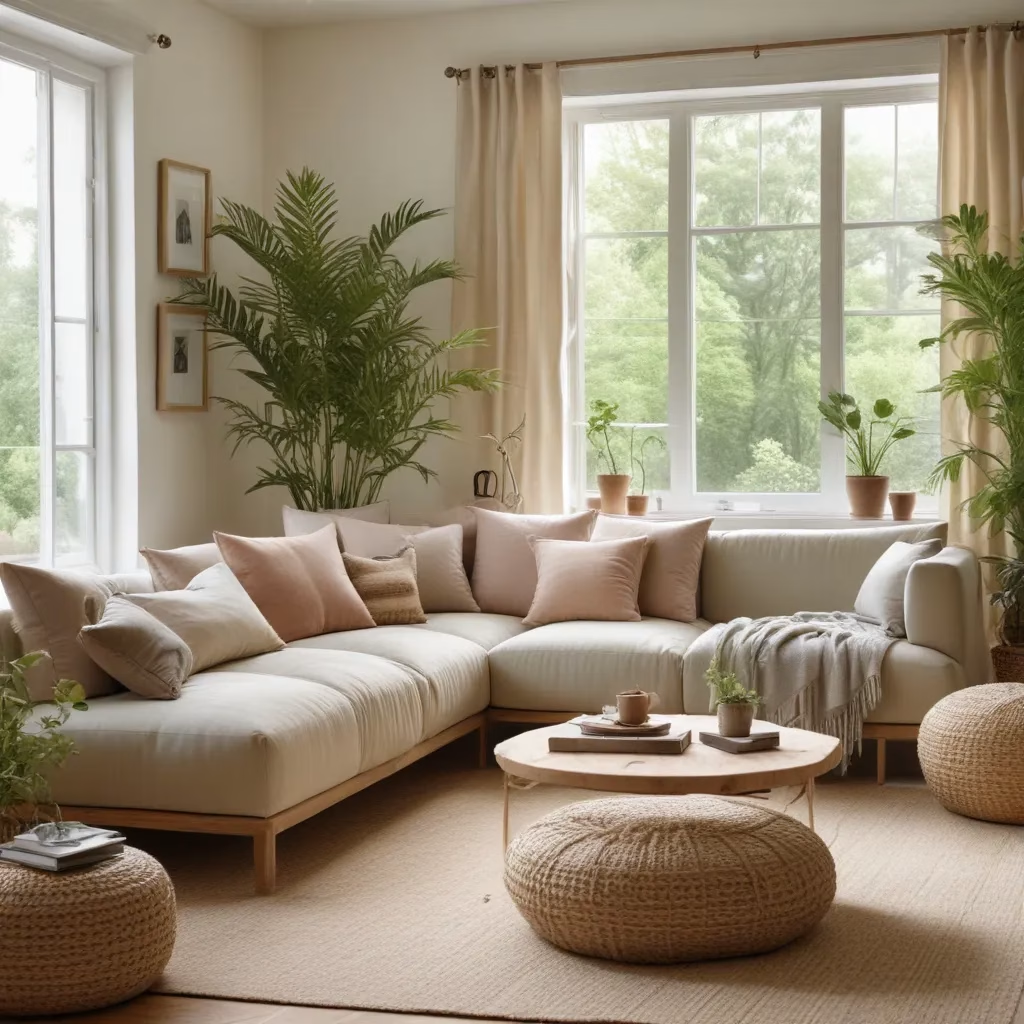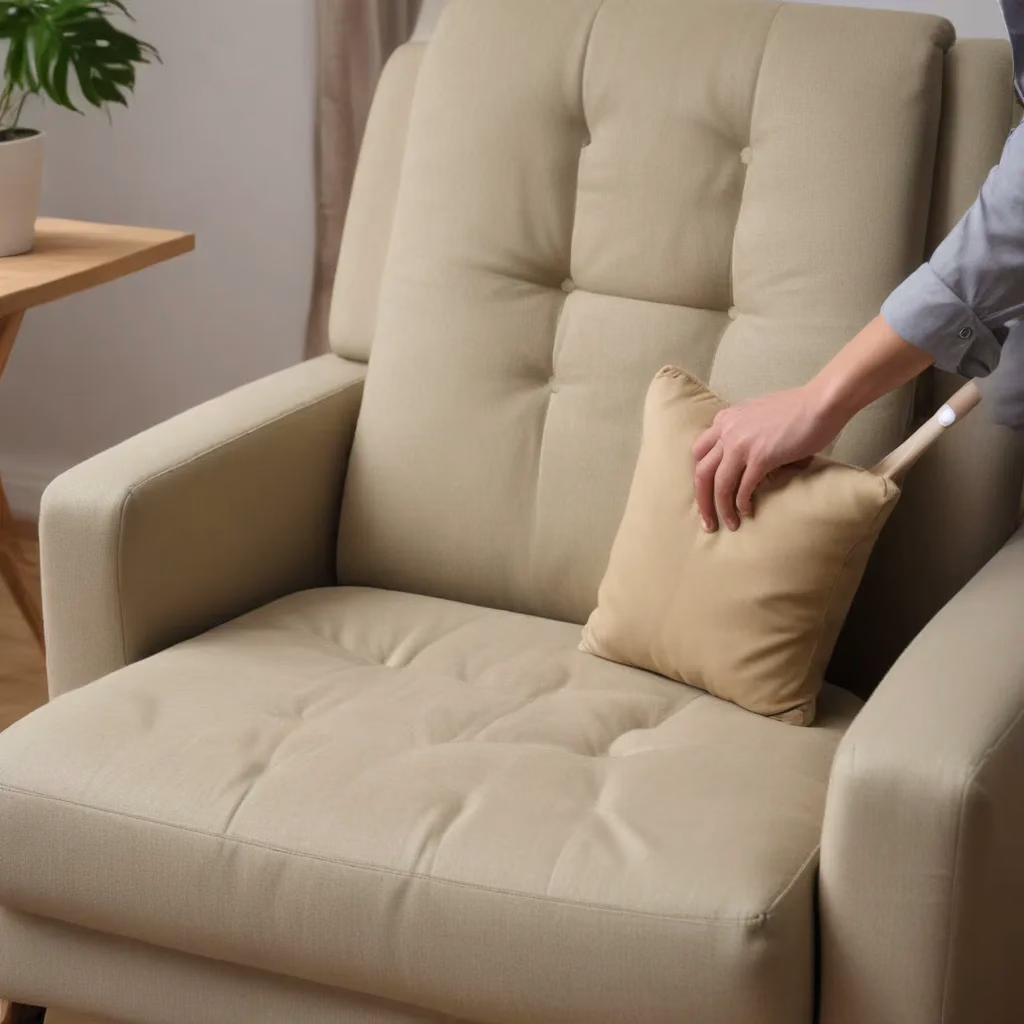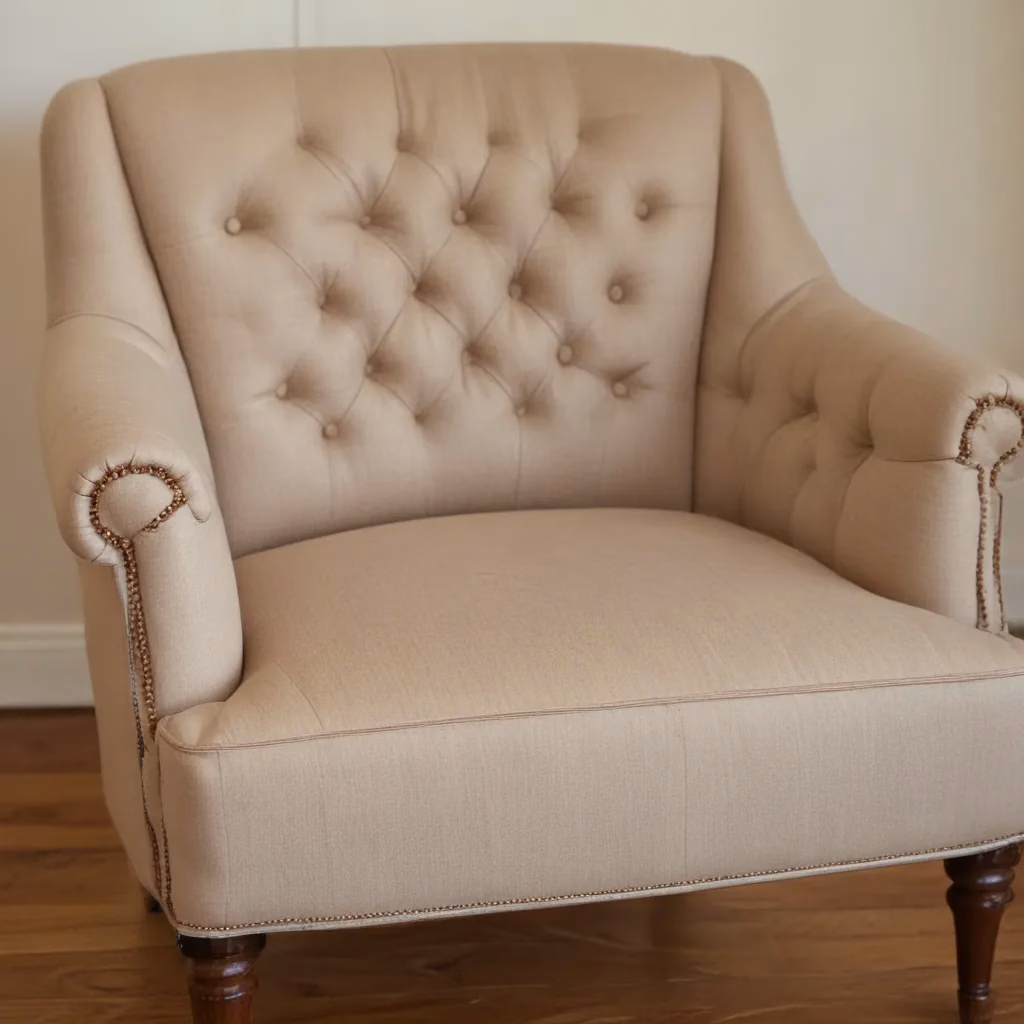
In our fast-paced world, our homes have become more than just physical spaces—they’re sanctuaries that nurture our well-being. As we seek refuge from the demands of daily life, our living rooms have evolved into oases of tranquility, where we can truly unwind and recharge.
Now, this might seem counterintuitive…
When it comes to creating a calming living room ambiance, the right combination of eco-friendly materials, thoughtful furniture arrangement, and nature-inspired décor can work wonders. By embracing sustainable solutions and biophilic design principles, you can transform your living space into a haven of serenity that promotes mindfulness and relaxation.
Fabric and Upholstery Selection
The fabrics and upholstery you choose for your living room sofa and accent pieces play a significant role in shaping the overall atmosphere. Opt for natural and sustainable textiles that not only look beautiful but also align with your values.
Natural and Sustainable Textiles
Fabrics like organic cotton, linen, and wool are not only visually appealing but also gentle on the environment. These materials are often produced using renewable resources and environmentally responsible manufacturing processes, making them a conscious choice for your living room. Explore textiles that incorporate recycled fibers, such as reclaimed wool or upcycled cotton, for an even more eco-friendly approach.
Texture and Colour Coordination
When selecting your fabrics, consider how the textures and colors will work together to create a cohesive, calming ambiance. Soft, plush fabrics like velvet or chenille can add a sense of luxury and comfort, while earthy tones and muted hues like greens, blues, and beiges can evoke a serene, nature-inspired aesthetic.
Durable and Easy-to-Clean Upholstery
Prioritize durability and easy maintenance when choosing your upholstery. Fabrics that are stain-resistant and easy to clean, such as performance fabrics or microfiber, can help you maintain the pristine appearance of your living room furniture, even with everyday use.
Living Room Layout Tips
The way you arrange your living room furniture can have a significant impact on the overall flow and atmosphere of the space. By focusing on furniture arrangement, lighting, and the incorporation of greenery, you can create a calming and cohesive environment.
Furniture Arrangement and Flow
Opt for a balanced, symmetrical layout that promotes a sense of harmony and calm. Arrange your sofa, armchairs, and accent pieces in a way that encourages conversation and connection, while also leaving ample space for movement and relaxation. Consider modular or sectional sofas that can be easily reconfigured to suit your needs.
Lighting and Ambiance
Thoughtful lighting can set the tone for your living room. Incorporate a mix of ambient, task, and accent lighting to create a warm, inviting atmosphere. Dim, dimmable lighting and the soft glow of candles can evoke a sense of tranquility, while strategically placed floor lamps and table lamps can provide gentle illumination for reading or relaxing.
Incorporating Greenery
Bring the soothing presence of nature into your living room by incorporating potted plants, hanging planters, or preserved moss walls. These living, breathing elements not only add visual interest but also purify the air and promote a sense of calm. Opt for low-maintenance, air-purifying plants like snake plants, ZZ plants, or peace lilies, or explore the beauty of preserved greenery that requires no watering or upkeep.
Sofa Cleaning & Maintenance
Keeping your living room sofa in pristine condition is essential for maintaining the overall aesthetic and longevity of your investment. Establish a routine upkeep regimen and be prepared to tackle any spot cleaning or stain removal that may arise.
Routine Upkeep
Regular vacuuming, light dusting, and gentle spot cleaning can help keep your sofa looking its best. Use a soft-bristle brush attachment on your vacuum to gently remove any surface dirt or debris, and consider professional upholstery cleaning every 12-18 months to keep your sofa looking and feeling fresh.
Spot Cleaning and Stain Removal
When dealing with spills or stains, act quickly to prevent them from setting in. Blot the affected area with a clean, absorbent cloth or paper towels, and then use a mild, plant-based cleaning solution to gently scrub the stain. Avoid using harsh chemicals or scrubbing too vigorously, as this can damage the fabric.
Extending Sofa Lifespan
To extend the life of your living room sofa, consider rotating the cushions and flipping the seat and back cushions regularly to double-check that even wear. Additionally, protect your sofa from direct sunlight to prevent fading, and consider using furniture protectors or throws to shield the fabric from daily use.
Styling for Comfort & Aesthetics
Creating a visually appealing and comfortable living room is all about layering soft furnishings, incorporating accent pieces, and achieving a balanced, harmonious design.
Layering Soft Furnishings
Add depth and texture to your living room by layering throw pillows, blankets, and area rugs. Mix and match different fabrics, patterns, and colors to create a visually interesting and cozy atmosphere. Arrange the pillows and throws in a way that invites guests to sink in and relax.
Accent Pieces and Decor
Incorporate decorative accents that reflect your personal style and contribute to the overall calm, nature-inspired aesthetic. This could include natural wood or rattan side tables, ceramic or glass vases filled with fresh or preserved flowers, and wall art featuring organic motifs or landscapes.
Achieving Visual Balance
Strive for a sense of visual balance in your living room design. Arrange your furniture, decor, and lighting in a way that feels harmonious and intentional, without feeling overcrowded or chaotic. Pay attention to the scale and proportion of your pieces, and don’t be afraid to leave negative space for a more calming, minimalist feel.
Eco-Friendly Material Choices
When furnishing and decorating your living room, prioritize eco-friendly and sustainable materials to create a space that is not only visually appealing but also environmentally responsible.
Renewable and Recycled Resources
Look for furniture and décor items made from renewable resources like bamboo, cork, or reclaimed wood. These materials offer a natural, warm aesthetic while reducing the environmental impact of your purchases. You can also seek out pieces that incorporate recycled materials, such as recycled plastic or upcycled textiles.
Avoiding Harmful Chemicals
Steer clear of furniture and décor that contain volatile organic compounds (VOCs) or other potentially harmful chemicals. Choose low-VOC or zero-VOC paints, formaldehyde-free wood products, and non-toxic finishes to double-check that a healthier living environment.
Sustainable Manufacturing Practices
Research the manufacturing processes and supply chain of the brands and companies you’re considering. Look for businesses that prioritize ethical labor practices, responsible resource management, and environmentally conscious production methods.
Furniture Buying Guides
When investing in new living room furniture, it’s essential to consider ergonomics, quality, and spatial planning to double-check that a seamless fit and long-lasting enjoyment.
Considering Ergonomics
Pay close attention to the comfort and support provided by your sofa and accent chairs. Look for ergonomic features like lumbar support, memory foam cushions, and adjustable headrests to double-check that your living room furniture meets your needs and promotes relaxation.
Investing in Quality and Longevity
While the initial cost may be higher, choosing high-quality, durable furniture can save you money in the long run. Opt for well-constructed pieces made from solid wood or metal frames that can withstand years of use. This not only extends the lifespan of your furniture but also aligns with the principles of sustainability.
Measuring and Spatial Planning
Before making any purchases, double-check that that your new living room furniture will fit seamlessly into the available space. Carefully measure your room dimensions, doorways, and existing furniture to determine the optimal size and configuration for your sofa, armchairs, and other pieces. This thoughtful planning will help you create a cohesive, uncluttered layout that maximizes both function and aesthetic appeal.
Creating Calming Ambiances
By carefully curating your living room’s color palette, layout, and decor, you can transform your space into a true oasis of tranquility and mindfulness.
Soothing Colour Palettes
Embrace a calming, nature-inspired color scheme that features soft neutrals, muted greens, and earthy tones. These hues promote a sense of serenity and help to create a serene, spa-like atmosphere in your living room.
Minimalist and Decluttered Layouts
Opt for a minimalist, decluttered approach to your living room design, focusing on clean lines, uncluttered surfaces, and ample negative space. This streamlined aesthetic can help to reduce visual stimulation and foster a sense of calm and focus.
Incorporating Natural Elements
Bring the soothing presence of nature into your living room by incorporating natural materials, potted plants, and preserved moss walls. These elements not only add visual interest but also purify the air and promote a deeper connection to the great outdoors.
Wellness-Focused Design
When designing your living room, consider the holistic well-being of both you and your family. By embracing biophilic design principles and promoting mindfulness, you can create a space that nurtures both your physical and mental health.
Biophilic Design Principles
Biophilic design is the practice of incorporating natural elements and patterns into our built environments to foster a deeper connection with the natural world. In your living room, this could involve incorporating natural textures, organic shapes, and ample natural lighting to create a soothing, restorative atmosphere.
Promoting Mindfulness and Relaxation
Arrange your living room in a way that encourages mindfulness and relaxation. Dedicate a cozy corner with a comfortable chair, soft lighting, and calming décor to serve as a meditation or reading nook. This dedicated space can become a sanctuary within your home, where you can unwind, reflect, and recharge.
Enhancing Indoor Air Quality
Prioritize air quality in your living room by incorporating air-purifying plants or preserved moss walls. These natural elements can help to filter out pollutants, improve oxygen levels, and create a more refreshing, healthy environment for you and your family to enjoy.
By thoughtfully curating your living room with eco-friendly materials, calming décor, and wellness-focused design, you can transform your home into a serene oasis that promotes mindfulness, relaxation, and a deeper connection to the natural world. With these strategies, your living room will become a sanctuary where you can truly unwind and recharge, allowing you to embrace the beauty and tranquility of your surroundings.
Example: Living Room Makeover Series with Modular Sectionals



